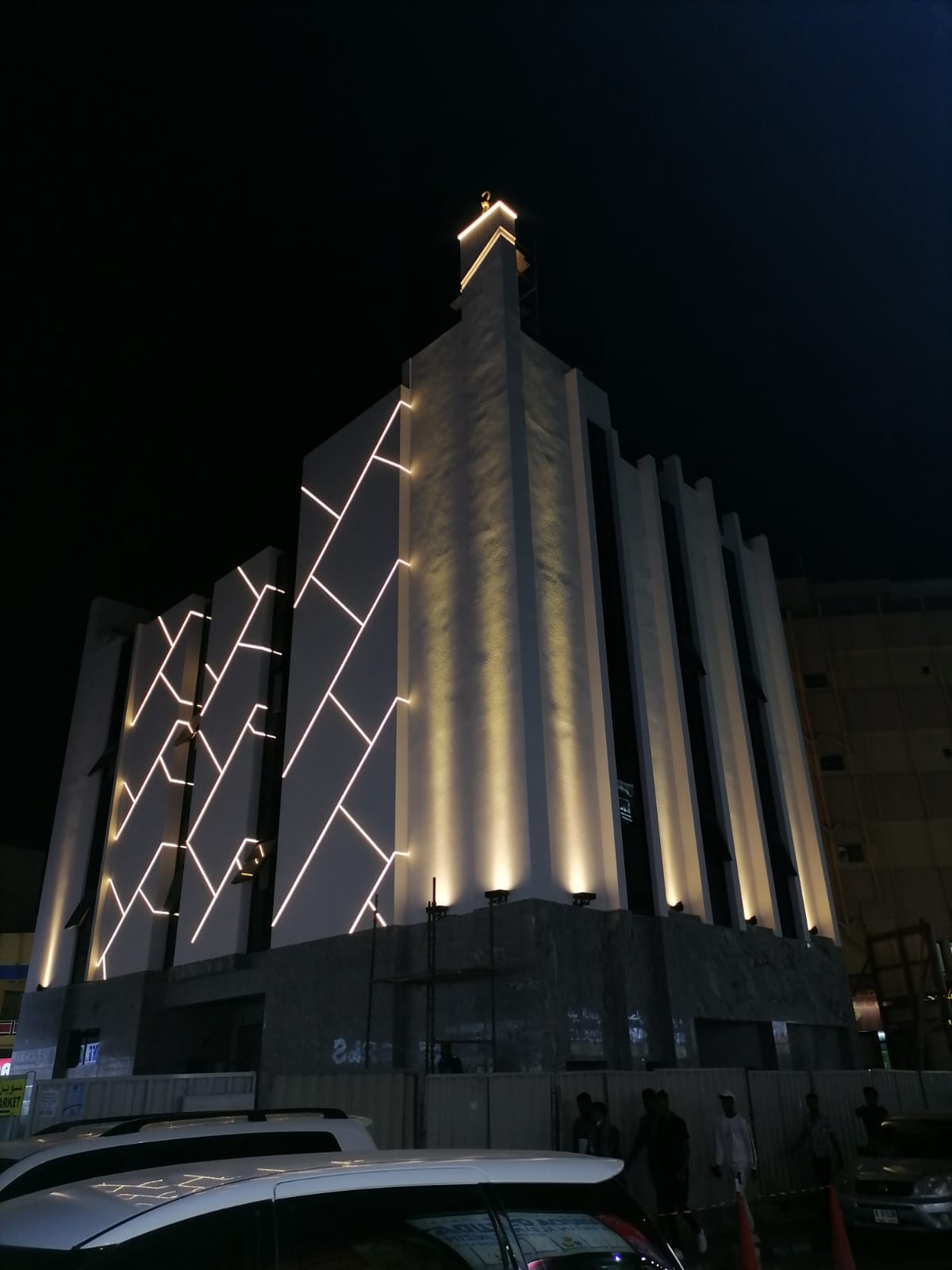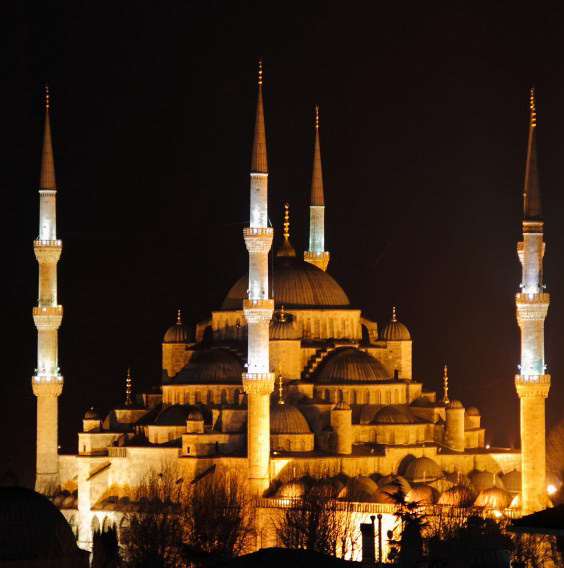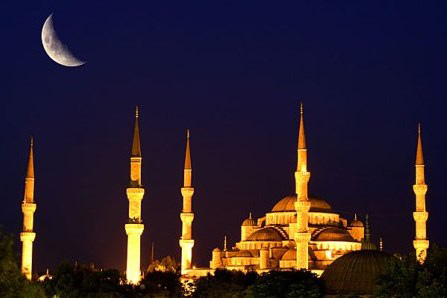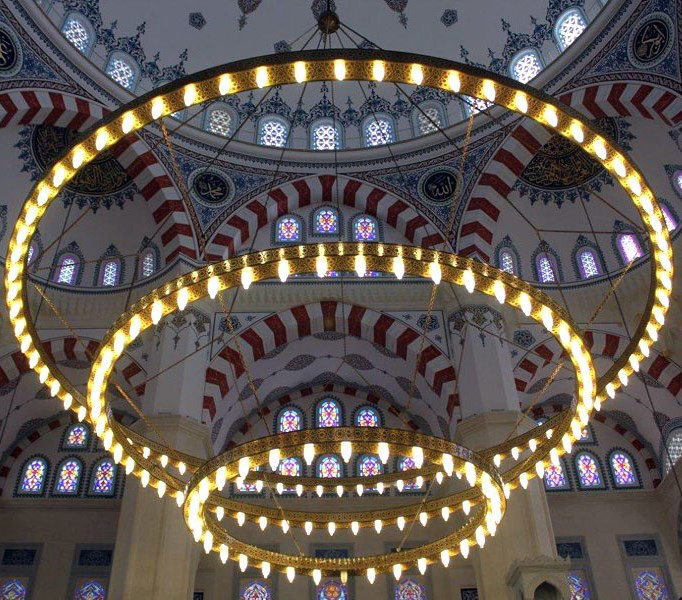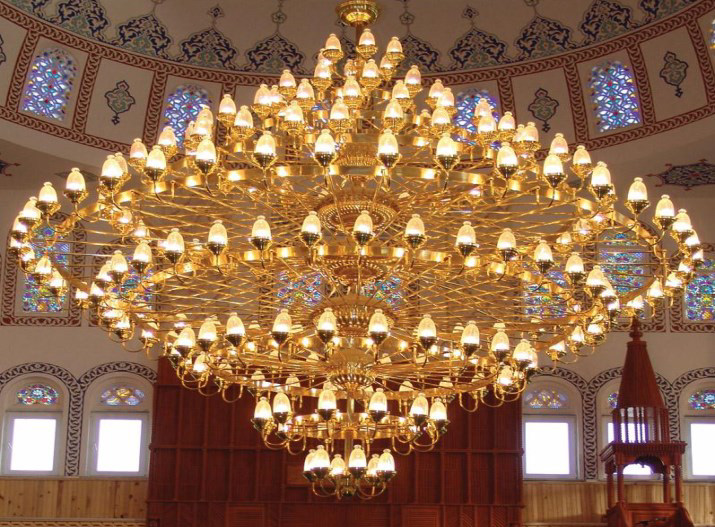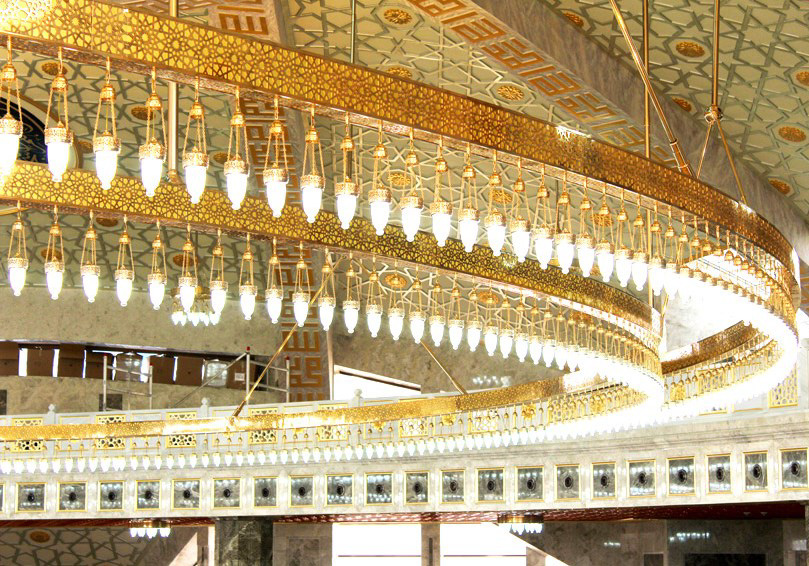Mosque Lighting
Lighting is an essential element in the design of any mosque, as it plays a critical role in creating a peaceful and spiritual atmosphere. Mosque lighting design should not only provide adequate illumination but should also enhance the beauty and architectural features of the mosque.
The purpose of mosque lighting design is to provide a serene atmosphere that inspires prayer while highlighting the beauty of the mosque's architecture.
Mosque lighting design should be designed to provide both functional and aesthetic benefits, including:
Providing Adequate Illumination: The lighting should provide adequate illumination to facilitate prayer and other activities in the mosque.
Highlighting Architectural Features: The lighting should enhance the mosque’s architectural features and decorative elements, creating a visually stunning display.
Creating a Spiritual Atmosphere: The lighting should create a peaceful and spiritual atmosphere, conducive to prayer and reading Quran.
Energy Efficiency: Mosque lighting design should also be energy-efficient, reducing electricity consumption and minimizing the impact on the environment.
What we do
We provide different types of mosque lighting that can be used to enhance the beauty and atmosphere of the mosque, including:
Chandeliers: Chandeliers are a common feature in mosque lighting design and can provide a stunning visual display. They can be designed to complement the mosque’s architecture and decorative elements.
Cove Lighting: Cove lighting involves installing fixtures in a recessed area to create a soft, indirect light that enhances the beauty of the mosque’s interior.
Pendant Lighting: Pendant lighting involves installing fixtures that hang from the ceiling, providing a dramatic effect that highlights the mosque’s architectural features.
Wall Sconces: Wall sconces can provide both functional and aesthetic benefits, providing adequate illumination and enhancing the mosque’s beauty.
Natural Light: Through architecture design Natural light can also be used in mosque lighting design, providing a serene and peaceful atmosphere that complements the mosque’s architecture.

How we do
When designing mosque lighting, we consider several factors such as:
Mosque Size: The size of the mosque should be considered when designing the lighting, as larger mosques require more lighting fixtures to provide adequate illumination.
Mosque Architecture: The mosque’s architecture should be considered when selecting lighting fixtures and designing the lighting scheme, to ensure that the lighting complements the mosque’s features and enhances its beauty.
Color Temperature: The color temperature of the lighting should be considered, as warmer tones can create a more serene and peaceful atmosphere, while cooler tones can create a more vibrant and energetic atmosphere.
Energy Efficiency: Energy efficiency should be considered when selecting lighting fixtures and designing the lighting scheme, to reduce electricity consumption and minimize the impact on the environment.

Leading light solutions provider, We build amazing light solutions
Explore
© All Copyright 2023 by Nibraslighting.com





